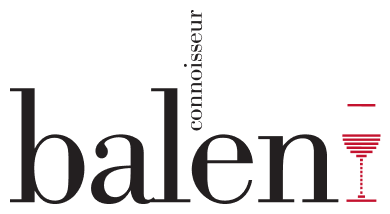Sena, Valle Aconcagua, Vina Sena 75cl
155,00 €
–
| Marjasort | Cabernet Sauvignon, Malbec, Cabernet Franc, Carmenere, Petit Verdot |
|---|---|
| Aasta | |
| Alkoholisisaldus | |
| Regioon | |
| Riik | |
| Tootja |
Kirjeldus
Seña on Tšiili enimhinnatud vein. Esialgu oli Seña Eduardo Chadwicku (Viña Errazuriz) ning Robert Mondavi ühisprojekt, kuid 2004. aastast kuulub kogu projekt Eduardole. Chadwicki ning Mondavi leidsid peale pikki otsinguid unikaalse 42 ha suuruse asukoha Aconcagua Valley’s, kus viinamarjad saavutavad ideaalse küpsuse, kuid andes samas maksimaalselt elegantse tulemuse. Kahe mehe eesmärk oli valmistada maailma üks parimaid veine, mis suudaks “konkureerida” parimate Bordeaux, Toskaana ning Napa Valley veinidega. Alates 2005. aastast on Seña sertifitseeritud biodünaamiliseks.
Vein on valmistatud 52% Cabernet Sauvignon, 15% Malbec, 15% Carmenère, 10% Cabernet Franc ja 8% Petit Verdot viinamarjadest. Viinamarjad koristatakse käsitsi 12 kg kastidesse, misjärel toimub veinimajas topeltsorteerimine. Vein kääritatakse terasmahutites 24-28 kraadi juures, pärat mida laagerdub vein 22 kuud väikestes Prantsuse tammevaatides, millest 67% on uued. Toimub ka täielik naturaalselt algav malolaktiline kääritamine.
Aroomis on tunda mustsõstraid, roosiõisi, lavendlit, tuliseid kive ning münti. Maitse on suurepärases tasakaalus, täidlane, uskumatu sügavuse ja kontsentratsiooniga. Väga lihvitud tanniinid. Kvaliteedi ja struktuuri poolest ei jäe kindlasti alla Bordeaux First Growth veinidele. Üli pika järelmaitsega. Aastane toodang on vaid 700 kasti. Soovitatav joomisaken 2022-2040.
“The aromas of blackberries, cedar, sandalwood and black tea are compelling. Black olives. Rosemary and sage undertones. Full-bodied, rich and powerful Seña with impressive and powerful tannins, yet harmony and balance. Fruit-forward. Lightly chewy. Fresh and energetic wine in a hot year. Broad-shouldered. Drink after 2022.” James Suckling 99 points
“They explained how the 2017 Seña was produced with “grapes that were handpicked in the morning and transported to the winery in 12-kilogram boxes for a careful inspection on a double sorting table. The grapes fermented in stainless steel tanks at 25 to 31 degrees Celsius (77 to 88 degrees Fahrenheit), depending on the variety and the level of extraction desired. Three pump-overs were carried out daily during fermentation to rotate the volume of the tank 0.5 to 1.5 times. Total maceration time ranged from 15 to 30 days for the Cabernet Sauvignon, Merlot, Malbec and Carmenère and eight to 12 days for the Petit Verdot, according to the development of each block vinified. The final blend was racked to French oak barrels (67% new) and aged for 22 months, during which time malolactic fermentation and stabilization occurred naturally.” They harvested early and managed to keep the same alcohol level as the 2016. This has less aromatic exuberance and is a more serious vintage with good concentration and weight, not as aerial as the 2016. They increased the amount of wine matured in larger 2,500-liter foudres instead of barrique. This is more powerful, structured and concentrated, like a drier version of the 2015, with some grainy tannins, more acidity, more austerity and less primary fruit. The tannins have some grip (the earlier harvest perhaps?) and might need a little bit of time in bottle, and the wine seems to have what it takes to develop nicely in bottle. They produced 120,000 bottles of this. It was bottled in February and March 2019. Just for the record, the varietal breakdown is 52% Cabernet Sauvignon, 15% Malbec, 15% Carmenère, 10% Cabernet Franc and 8% Petit Verdot, reflecting a good year for Carmenère and Cabernet Franc.” Wine Advocate 96+ points




